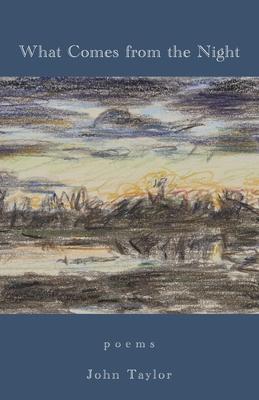What Comes from the Night: a question is raised and answers are promised. Eleven sequences of poems compose this book, with the title suite bearing this hint-like epigraph: "from the yellow notebook on the bedside table." The author jots down fragmentary remains of dreams or thoughts upon awakening that help him seek a more heightened level of self-awareness-"apperceptions," as he calls them, vivid traces of our suddenly becoming conscious of our aliveness and our need to ponder it. Indeed, when John Taylor records what the night has delivered to him in short, thought-provoking verse, new questions are suggested. He welcomes these gifts of enigmas ever transforming themselves. He also finds them, by day, in a high Alpine valley whose trails he knows intimately, amid troubling vestiges chanced upon in Brittany, along the Loire River near which he has long lived, and by imagining himself overlooking an American bay to which a haunting death continues to draw him. Such are the in-between zones that have long characterized Taylor's writings, notably in earlier books such as If Night is Falling, The Dark Brightness, Grassy Stairways, Remembrance of Water & Twenty-Five Trees, not to mention the two resonant titles-Fragments for the Next Form and Transizioni-of a bibliophilic livre d'artiste published by a Parisian art gallery and a bilingual Italian-English volume issued in Italy. John Taylor's deep-probing lines leave the reader on thresholds.

What Comes from the Night: a question is raised and answers are promised. Eleven sequences of poems compose this book, with the title suite bearing this hint-like epigraph: "from the yellow notebook on the bedside table." The author jots down fragmentary remains of dreams or thoughts upon awakening that help him seek a more heightened level of self-awareness-"apperceptions," as he calls them, vivid traces of our suddenly becoming conscious of our aliveness and our need to ponder it. Indeed, when John Taylor records what the night has delivered to him in short, thought-provoking verse, new questions are suggested. He welcomes these gifts of enigmas ever transforming themselves. He also finds them, by day, in a high Alpine valley whose trails he knows intimately, amid troubling vestiges chanced upon in Brittany, along the Loire River near which he has long lived, and by imagining himself overlooking an American bay to which a haunting death continues to draw him. Such are the in-between zones that have long characterized Taylor's writings, notably in earlier books such as If Night is Falling, The Dark Brightness, Grassy Stairways, Remembrance of Water & Twenty-Five Trees, not to mention the two resonant titles-Fragments for the Next Form and Transizioni-of a bibliophilic livre d'artiste published by a Parisian art gallery and a bilingual Italian-English volume issued in Italy. John Taylor's deep-probing lines leave the reader on thresholds.